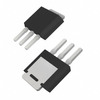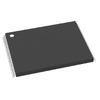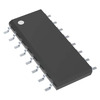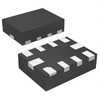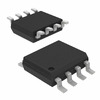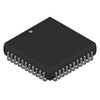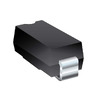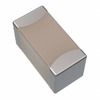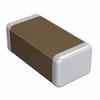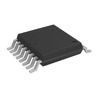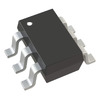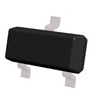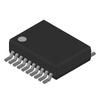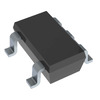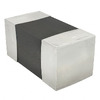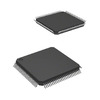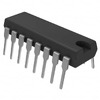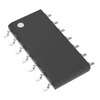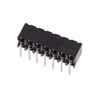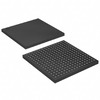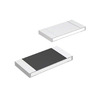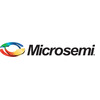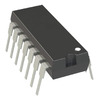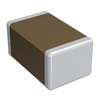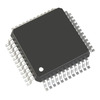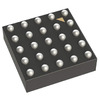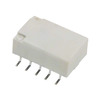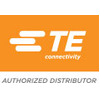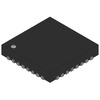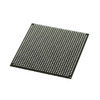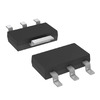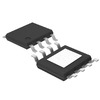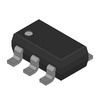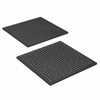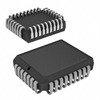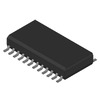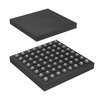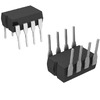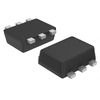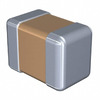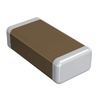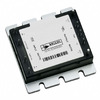Everything You Need to Know About the LPC1769 Microcontroller
The LPC1769 microcontroller is a powerful, versatile chip designed for a wide range of applications, from electronics to automation. In this article, you’ll find everything you need to know about its features, uses, and how to get started with programming it.Catalog
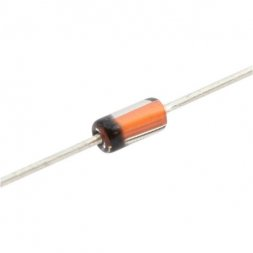
Overview of LPC1769
The LPC1769 is built on an ARM Cortex-M3 core, a design well-suited for embedded applications that demand low power and efficient processing. Operating at frequencies of up to 120 MHz, this microcontroller strikes a balance between performance and energy use. The Cortex-M3 core brings advancements like improved debugging features and enhanced integration, helping support complex applications with ease. Whether in consumer electronics, industrial automation, or small computing tasks, the LPC1769’s architecture provides a flexible foundation that can adapt to various embedded needs.
LPC1769 Pin Configuration
[IMAGE OF LPC1769 Pin Configuration]
LPC1769 CAD Model
LPC1769 Symbol
[IMAGE OF LPC1769 Symbol]
LPC1769 Footprint
[IMAGE OF LPC1769 Footprint]
LPC1769 3D Model
[IMAGE OF LPC1769 3D Model]
LPC1769 Specifications
Technical specifications, features, characteristics, and components with comparable specifications of NXP USA Inc. LPC1769FBD100,551
[TABLE OF Specifications]
Features and Benefits of LPC1769
High-Performance Processor
The LPC1769 is built around an ARM Cortex-M3 processor, running at speeds of up to 120 MHz. This high-performance core lets you run applications smoothly and handle complex tasks efficiently, even in energy-sensitive environments.
Memory Protection Unit (MPU)
The integrated Memory Protection Unit (MPU) supports up to eight memory regions, helping you manage memory access. This feature is especially useful when working on applications that require a structured approach to memory use, helping to keep your programs secure and organized.
Advanced Interrupt Control
With the built-in Nested Vectored Interrupt Controller (NVIC), the LPC1769 efficiently handles multiple interrupts. This controller improves response times for your programs, allowing you to manage multiple tasks and events without delays. It’s particularly helpful for real-time applications, where quick responses are needed.
Application Areas for LPC1769
eMetering
The LPC1769 is well-suited for electronic metering applications, providing the reliability and processing power needed to manage data collection and analysis efficiently.
Alarm Systems
In alarm and security systems, the LPC1769’s capabilities allow it to handle multiple sensors and real-time monitoring, making it a dependable choice for security-focused applications.
Lighting
The microcontroller’s efficient power management and control features make it ideal for lighting systems, where it can handle various lighting controls, dimming, and automation functions.
White Goods
The LPC1769 can be used in household appliances, often referred to as white goods, where it contributes to tasks like motor control and user interface management, helping create more responsive and efficient appliances.
Industrial Networking
For industrial networking, the LPC1769’s processing speed and connectivity options allow it to support communication protocols and manage data across devices, making it useful in connected industrial environments.
Motor Control
In motor control applications, the LPC1769 provides precise control over motors, making it suitable for robotics, automation, and other systems that rely on accurate motor performance.
LPC1769 Application Circuit
For applications where the LPC1769 connects to a USB device, managing the voltage on the VBUS pin is important to ensure safe operation. The maximum voltage allowed on the VBUS pin is 3.6V, so one way to keep it within this limit is by using a voltage divider. This voltage divider adjusts the voltage from the USB connector to a level that works well for the microcontroller.
The voltage divider should be set so that the VBUS pin reads above 0.7 times the VDD voltage to show a logic HIGH but still stays under the 3.6V maximum. Here’s an example setup:
VBUS maximum voltage: 5.25V
VDD: 3.6V
To bring this down, you’ll want a divider that reduces the voltage to around 0.686 of its original level, which aligns it to the limits for proper operation. This setup helps the LPC1769 run smoothly and safely in USB applications.
[IMAGE OF LPC1769 Application Circuit]
Programming Guide for LPC1769
Getting Started with ARM Cortex M3
To begin programming with the LPC1769, you’ll need an understanding of the ARM Cortex M3 architecture, which offers a blend of performance and power efficiency. Familiarize yourself with its basic structure and functions to make the most of your programming experience.
Setting Up the Programming and Debugging Environment
Setting up a suitable environment is the first step. Using an Integrated Development Environment (IDE) like Keil MDK provides the tools necessary to write, compile, and debug your code. Ensure that all necessary software and drivers are installed for smooth operation.
Installing the Driver for CoLinkEx
For proper debugging, install the CoLinkEx driver, which allows your computer to communicate effectively with the LPC1769. This setup enables real-time debugging, helping you address issues as they arise.
Integrating the Plugin with Keil MDK
To streamline your workflow, integrate any required plugins with Keil MDK. This integration allows you to leverage additional features in the IDE, enhancing your coding and debugging process.
Register Configuration (lpc17xx.h)
The lpc17xx.h header file contains definitions and configurations specific to the LPC17xx series. Including this file in your project provides you with access to important register configurations, making it easier to manage input/output operations and system settings.
Creating a Project in Keil uVision4 for LPC1769
Using Keil uVision4, you can create a dedicated project for the LPC1769. This setup will serve as the foundation of your code, allowing you to organize and manage files related to your program efficiently.
Configuring GPIO Pins with PINSEL
The PINSEL register allows you to select and configure GPIO pins based on your project needs. With PINSEL, you can easily assign specific functions to each pin, helping control the microcontroller’s connections.
Setting Up GPIO Direction with FIODIR
The FIODIR register controls the direction of each GPIO pin. Using FIODIR, you can specify whether a pin functions as an input or output, a critical step in defining how your program interacts with the external environment.
Package Outlines for LPC1769
[IMAGE OF LPC1769 Package Outline]
Manufacturer of LPC1769
NXP Semiconductors, headquartered in Eindhoven, Netherlands, is the manufacturer behind the LPC1769. Known for its focus on the automotive and secure connectivity markets, NXP supports a wide range of applications in industries worldwide. With about 31,000 employees across 35 countries and a strong engineering presence, NXP continually develops products that meet modern electronic needs, from everyday consumer devices to specialized industrial applications. The LPC1769 reflects NXP’s commitment to delivering microcontrollers that are versatile, reliable, and widely applicable across technology sectors.
Parts with Similar Specifications to LPC1769
The parts on the right have specifications similar to the NXP USA Inc. LPC1769FBD100,551
[TABLE OF Parts with Similar Specs]
Frequently Asked Questions [FAQ]
1. What is the LPC1769 used for?
The LPC1769 is an ARM Cortex-M3-based microcontroller designed for embedded applications. It is ideal for projects that need reliable, low-power processing, like those found in consumer electronics, industrial automation, and home appliances. Its efficient architecture and flexible features make it suitable for a range of applications that demand consistent performance.
2. How is the LPC1769 different from the LPC1768?
The main difference between the LPC1769 and the LPC1768 is their operating speed. The LPC1769 can run at up to 120 MHz, while the LPC1768 operates at up to 100 MHz. This difference in speed makes the LPC1769 a better option for applications that benefit from faster processing.
3. How does the LPC1769 connect to GPRS equipment?
To connect the LPC1769 to GPRS equipment, you need to power the GPRS module correctly and connect it through the appropriate input/output (I/O) pins on the LPC1769. By configuring these pins in the software, you can control the GPRS module to handle communication functions as needed.
Về chúng tôi
ALLELCO LIMITED
Đọc thêm
Yêu cầu nhanh chóng
Vui lòng gửi một yêu cầu, chúng tôi sẽ trả lời ngay lập tức.
Các câu hỏi thường gặp [FAQ]
1. What is the LPC1769 used for?
The LPC1769 is an ARM Cortex-M3-based microcontroller designed for embedded applications. It is ideal for projects that need reliable, low-power processing, like those found in consumer electronics, industrial automation, and home appliances. Its efficient architecture and flexible features make it suitable for a range of applications that demand consistent performance.
2. How is the LPC1769 different from the LPC1768?
The main difference between the LPC1769 and the LPC1768 is their operating speed. The LPC1769 can run at up to 120 MHz, while the LPC1768 operates at up to 100 MHz. This difference in speed makes the LPC1769 a better option for applications that benefit from faster processing.
3. How does the LPC1769 connect to GPRS equipment?
To connect the LPC1769 to GPRS equipment, you need to power the GPRS module correctly and connect it through the appropriate input/output (I/O) pins on the LPC1769. By configuring these pins in the software, you can control the GPRS module to handle communication functions as needed.
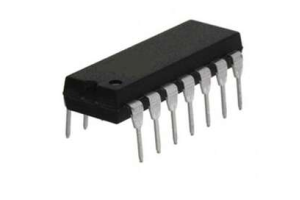
Integrating MC1413 in Electronic Projects
trên 2024/11/14
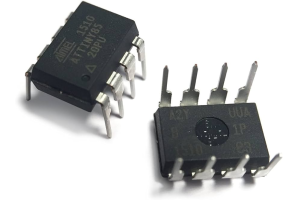
Everything You Need to Know About ATTINY85 Microcontroller
trên 2024/11/14
Bài viết phổ biến
-

GND trong mạch là gì?
trên 1970/01/1 3216
-

Hướng dẫn kết nối RJ-45: Mã màu kết nối RJ-45
trên 1970/01/1 2778
-
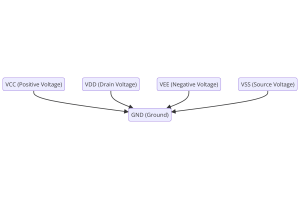
Hiểu điện áp cung cấp năng lượng trong Điện tử VCC, VDD, VEE, VSS và GND
trên 0400/11/19 2508
-
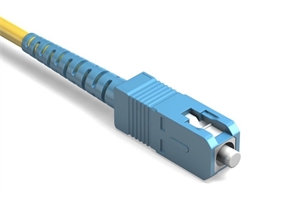
Các loại kết nối sợi: SC vs LC và LC vs MTP
trên 1970/01/1 2229
-

So sánh giữa DB9 và RS232
trên 1970/01/1 1849
-
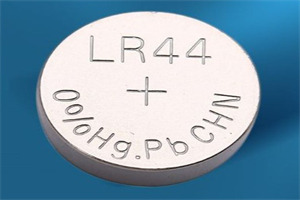
Pin LR44 là gì?
Điện, lực lượng phổ biến đó, lặng lẽ thấm vào mọi khía cạnh của cuộc sống hàng ngày của chúng ta, từ các thiết bị tầm thường đến thiết bị y tế đe dọa đến tính mạng, nó đóng một vai trò im lặng.Tuy nhiên, thực sự nắm bắt năng lượng này, đặc biệt là cách lưu trữ và xuất hiện hiệu quả, không phải là nhiệm vụ dễ dàng.Chính tro...trên 1970/01/1 1822
-

Hiểu về các nguyên tắc cơ bản: Kháng tự cảm và tính năng lực
Trong điệu nhảy phức tạp của kỹ thuật điện, một bộ ba các yếu tố cơ bản chiếm giai đoạn trung tâm: tự cảm, điện trở và điện dung.Mỗi người mang những đặc điểm độc đáo chỉ ra nhịp điệu động của các mạch điện tử.Ở đây, chúng tôi bắt đầu một hành trình giải mã sự phức tạp của các thành phần này, để khám phá vai trò riêng ...trên 1970/01/1 1776
-

Hướng dẫn toàn diện về pin CR2430: Thông số kỹ thuật, ứng dụng và so sánh với pin CR2032
Pin Cr2430 là gì?Lợi ích của pin CR2430Định mứcỨng dụng pin CR2430CR2430 tương đươngCR2430 so với CR2032Pin CR2430 Kích thướcNhững gì cần tìm khi mua CR2430 và tương đươngBảng dữ liệu PDFCâu hỏi thường gặp Pin là trái tim của các thiết bị điện tử nhỏ.Trong số nhiều loại có sẵn, các tế bào tiền xu đóng một vai trò quan trọng, thường đ...trên 1970/01/1 1756
-

RF là gì và tại sao chúng ta sử dụng nó?
Công nghệ tần số vô tuyến (RF) là một phần quan trọng của giao tiếp không dây hiện đại, cho phép truyền dữ liệu trên khoảng cách dài mà không có kết nối vật lý.Bài viết này đi sâu vào những điều cơ bản của RF, giải thích làm thế nào bức xạ điện từ (EMR) làm cho giao tiếp RF có thể.Chúng tôi sẽ khám phá các nguyên tắc của EMR, việc...trên 1970/01/1 1744
-

Hướng dẫn toàn diện về HFE trong bóng bán dẫn
Transitor là các thành phần quan trọng trong các thiết bị điện tử hiện đại, cho phép khuếch đại và điều khiển tín hiệu.Bài viết này đi sâu vào kiến thức xung quanh HFE, bao gồm cách chọn giá trị HFE của bóng bán dẫn, cách tìm HFE và mức tăng của các loại bóng bán dẫn khác nhau.Thông qua việc khám phá HFE của chúng tôi, chúng tôi có...trên 5600/11/19 1733
